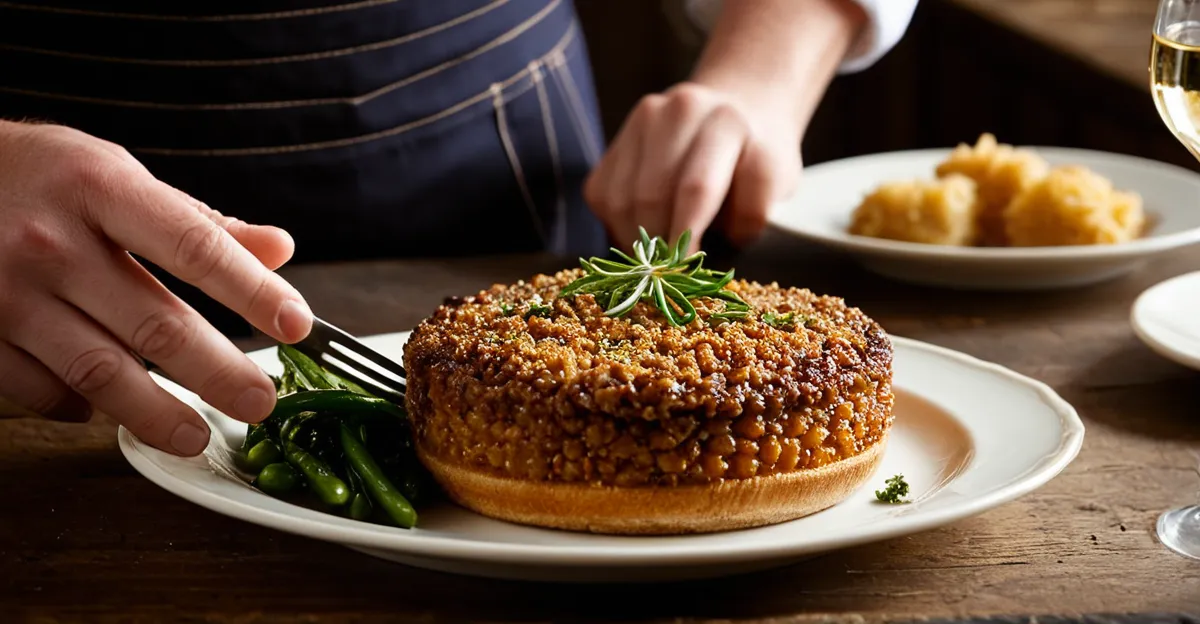Early Influences on British Cuisine
The Roman influence profoundly shaped British food history, introducing new ingredients like wine, olives, and various herbs. Romans also brought advanced cooking techniques such as baking in clay ovens and preserving food with salt, which were novel to early Britain. These innovations enriched local diets and laid the foundation for evolving culinary traditions.
Following the Romans, the Norman conquest further transformed British food culture. The Normans introduced richer, more elaborate dishes and refined methods of meat preparation, such as roasting large game, which became a status symbol in medieval feasting. They also brought dairy products, including cheeses, into wider use.
Also read : How can you cook an authentic bubble and squeak?
These invasions collectively sparked the early shaping of British culinary identity by merging native and foreign practices. For example, the Norman emphasis on elaborate banquets merged with Roman-introduced ingredients, creating a more diverse and sophisticated food culture. The combined influence introduced staples like wheat for bread-making and game meats, thereby influencing the diet of both the elite and commoners.
In summary, the Roman influence and Norman conquest were pivotal in diversifying British food history, introducing novel ingredients and cooking methods that would underpin the nation’s evolving culinary character. These early influences highlight the beginning of a resilient and adaptable British cuisine.
Additional reading : What are the best practices for baking a fluffy Victoria sponge cake?
Shifts During the Medieval and Tudor Periods
Exploring feasting culture and exotic flavors
The Medieval British cuisine era witnessed a dramatic expansion in feasting traditions. Banquets grew more elaborate, often showcasing vast arrays of meats, pies, and pastries to reflect wealth and status. These Tudor banquets became social spectacles where hosts flaunted their power through the opulence of food.
One key feature was the extensive use of imported spices like cinnamon, cloves, and pepper, which were rare and expensive. These spices not only added flavor but also symbolized global connections. The demand for spices influenced trade routes and introduced new tastes to Britain, profoundly changing culinary practices.
Societal factors heavily influenced food availability and presentation. Nobility had access to exotic ingredients and elaborate recipes, whereas commoners’ diets remained simpler and more dependent on locally grown crops. The period also saw growing sophistication in cooking techniques, including roasting and intricate sauce-making.
In summary, the Medieval British cuisine and Tudor banquets reveal a period when Britain’s food culture became more diverse and status-conscious, enriched by spices and the spectacle of feasting. This era laid groundwork for later culinary innovations by marrying social significance with gastronomic experimentation.
The Role of Colonization and Global Trade
Spreading flavors across continents
British cuisine underwent a profound transformation through colonial influence and expanding global trade from the 17th century onward. The British Empire’s far-reaching connections introduced a wealth of spices in British cuisine, including cinnamon, nutmeg, and ginger from Asia, as well as potatoes and tomatoes from the Americas. These ingredients reshaped staple dishes, creating new flavor profiles previously unknown in Britain.
How did colonial trade introduce new ingredients into British kitchens? Precisely through trade routes established across Asia, Africa, and the Americas, settlers and traders brought back exotic produce that diversified British food staples. Potatoes, for example, became a vital carbohydrate source that altered traditional diets extensively.
New recipes emerged as cooks experimented with these global ingredients, adapting foreign flavors to British tastes. Curries and chutneys illustrate this fusion, blending Indian spices with local cooking methods to create enduring dishes. Moreover, access to sugar from Caribbean colonies amplified the popularity of sweets and desserts in British culinary culture.
In summary, the theme of colonial influence and global trade marks a turning point where British cuisine shifted from regional to globally inspired, setting the stage for the rich, diverse food culture Britain enjoys today.
Victorian Era Dietary Changes
Scientific advances meet industrial transformation
The Victorian food landscape evolved dramatically due to industrialization, which revolutionized food production and availability. Prior to this era, foodstuffs were largely seasonal and regional, but industrial advances allowed for mass production and wider distribution. This meant urban populations had access to a variety of ingredients year-round, reshaping daily meal structures.
Scientific discoveries also played a crucial role in reforming diets. Nutritional knowledge grew, influencing public health initiatives and encouraging more balanced meals. Food safety became a priority with new preservation methods reducing spoilage and contamination risks. This era saw the rise of more structured meals, including the introduction of the iconic afternoon tea, which combined social ritual with modest culinary innovation.
The Victorian palate favored sweets as well, popularizing desserts like cakes and puddings. These treats reflected both technological advances in baking and the growing middle class’s desire for indulgence. Industrial bakery products began supplementing homemade goods, offering consistency and accessibility.
In essence, industrialization and dietary reforms in the Victorian era created a foundation for modern eating habits by integrating science, technology, and social customs. This period marks a bridge between traditional cooking and more contemporary British food culture.



